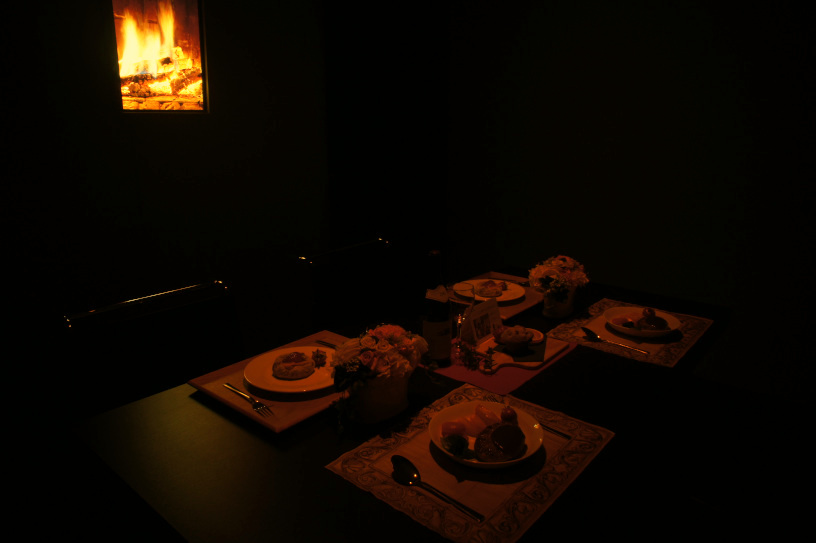- SYNCALABO
How closely LED lighting can recreate fire?
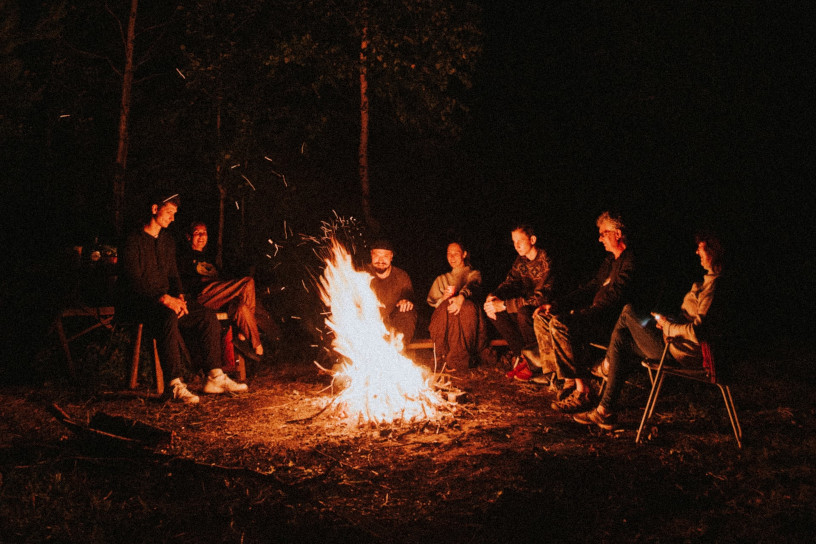
Fire has a charm that no other light source has. For example, a campfire has an allure that brings us into a meditative mind. Candlelight offers a therapeutic experience, like living in Northern Europe.
However, it’s not easy to use fire in daily life. Therefore, we experimented to see how closely modern LED lighting can recreate fire.
Defining “Fire.” Measuring red light from candles and campfires.
How many Kelvins(K) is the color temperature(CCT) of that burning red light of candles and campfires?
To find out, we first measured a candlelight.
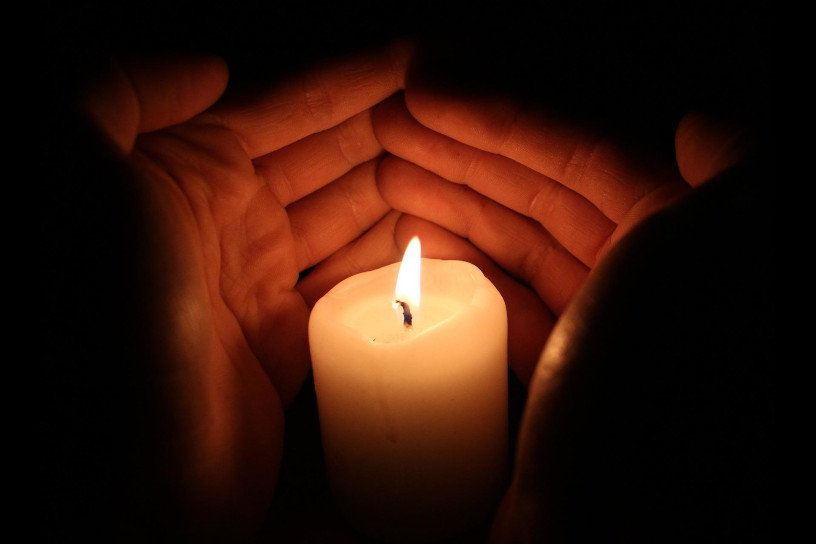
Measuring candlelight
– Things prepared –
・Candles
・Matches
・Light meter
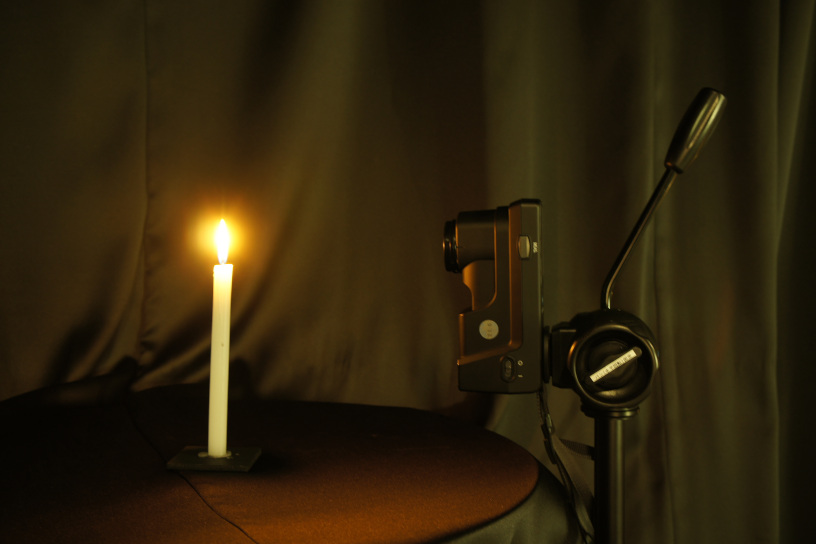
– Measurement result –
Candle: CCT 1967K Duv+0
Date:January 26, 2022 around 4:00 PM
Conditions:Measured 10 times at a distance of 10 cm and taken the average
Location: ENDO Tokyo showroom
Measurement equipment:KONICA MINOLTA CL-500A
The actual color temperature measurement of the candle was 1967K.
Measuring campfire
– Things prepared –
・Firewood
・Fire starter
・Light meter
– Measurement result –
Campfire: CCT 1770K Duv-1
Date:December 9, 2021 around 6:00 PM
Conditions:Measuring 17 times at a distance of 50 cm and taken the average
Location:Hattori Ryokuchi Park
Measurement equipment:KONICA MINOLTA CL-500A
The actual color temperature measurement of the campfire was 1770K.
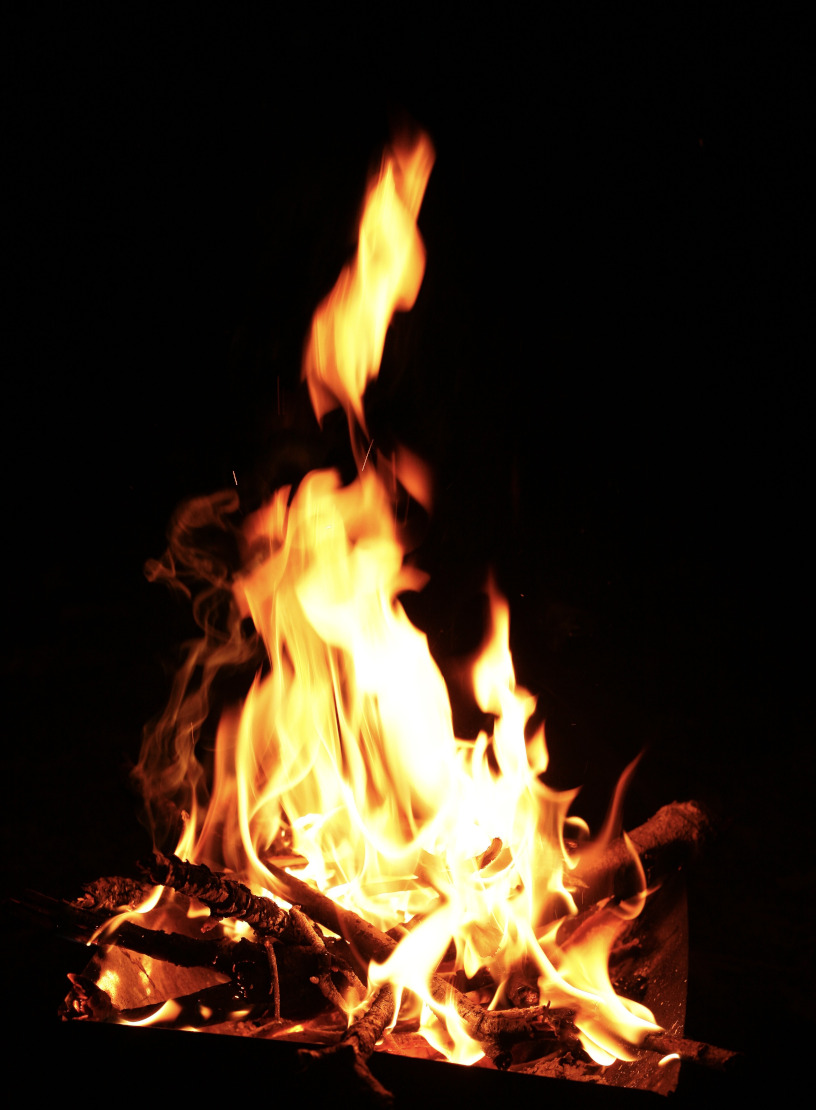
The average of the color temperature of the candle(1955K) and the campfire (1770K) is 1863K. It is a rough estimate, but we now learned that the color temperature of fire and flame is around 1800K.
Simulate and compare
We compared dinner scene simulations lit by different light sources.
– Things prepared –
・4-seat table
・Candles
・2 units of Synca downlights installed on the ceiling (model number:SXD1007W)
・Lux meter
Experiment 1. Lighting one candle
We waited until our eyes got used to the space, but it wasn’t bright enough for four people to dine.
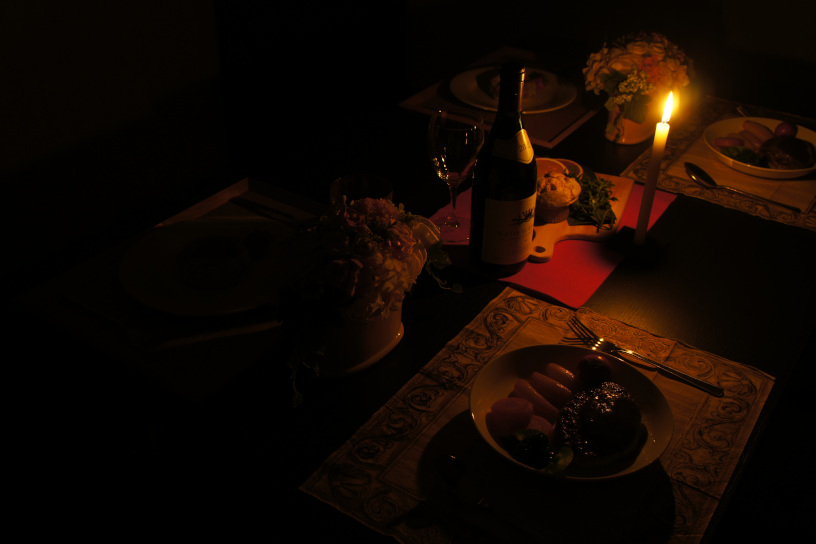
Experiment 2. Lighting two candles
It was a suitable atmosphere to enjoy a relaxing dinner. The candles highlighted the color and texture of the meal beautifully and made it look delicious. It made me want to enjoy candle-lit dinners on special days.
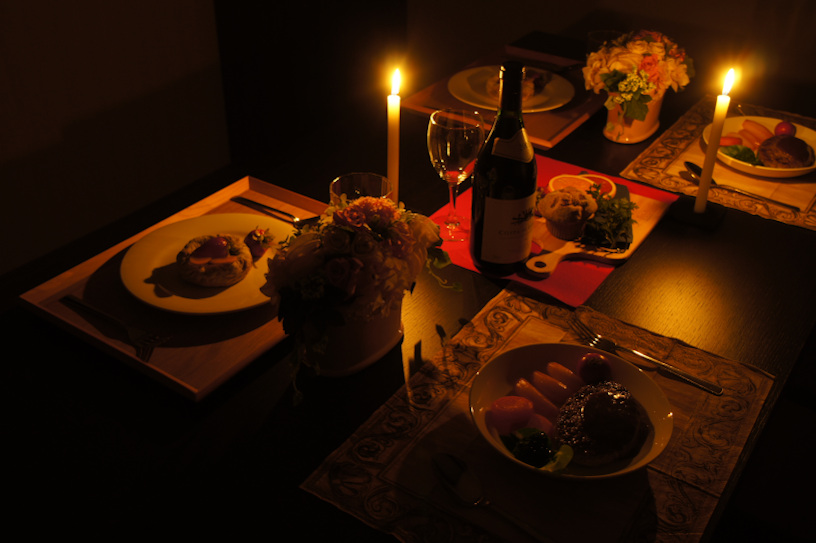
Experiment 3. Lighting with warm white 2700K
Using Synca’s dimming and color control, we tested “warm white” 2700K, which used to be the lowest CCT of conventional artificial lighting. We are used to “warm white”, but it gave us a washed-out impression in comparison. No charm like candles.
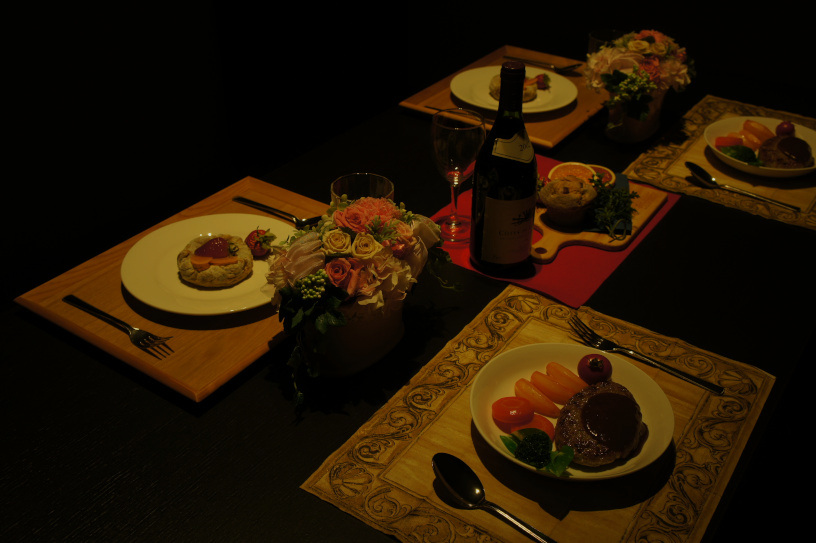
Experiment 4. Lighting with 1800K
Next, we tested with Synca luminaires set to 1800K, which is close to the estimate color temperature we measured of the fire. Compared to a candle’s flickering, point light source, LED illuminated the entire room and gave a very red impression. When dimmed to 1%, it created a sense of specialness, and the calmness it offered was, in a way, closer to that of a candle light, especially compared to 2700K.
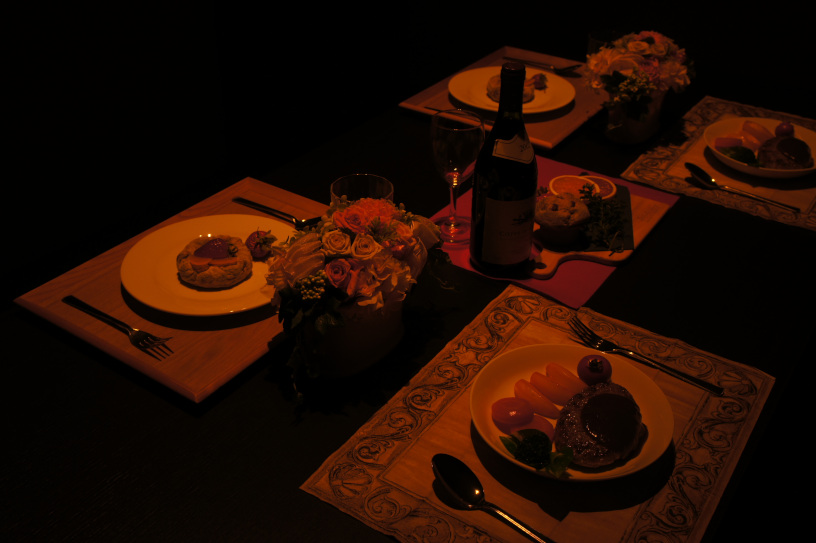
Summary of the experiment
In this experiment, we measured the color temperature of fire and compared candlelight and artificial lighting.
One of the biggest appeals of LED light is safety. Even with a small child, you can use them daily, without worrying about ventilation or fire accidents. This is also a good advantage for restaurants. If you would like to add more sparkle to the space lit by LED downlights, perhaps pendant lights with a point light source might complement nicely. The relationship of pendant lights and various color temperatures and comfortability will be an interesting theme to experiment another time.
On the other hand, the appeal of fire in a modern society comes from its high affinity with concentration and its unique allure. By incorporating such charms of fire into contemporary spaces, we may create a completely new space design. Recently, some people enjoy watching campfire videos. Although it is not a perfect reproduction of fire, by adding 1800K light like in Experiment 4, there is a possibility to make the space more enjoyable.
“Synca” has expanded the light color range like never before. Along with the pursuit of “how close we can get to fire”, in a sense, “how to surpass fire” is our real challenge.
